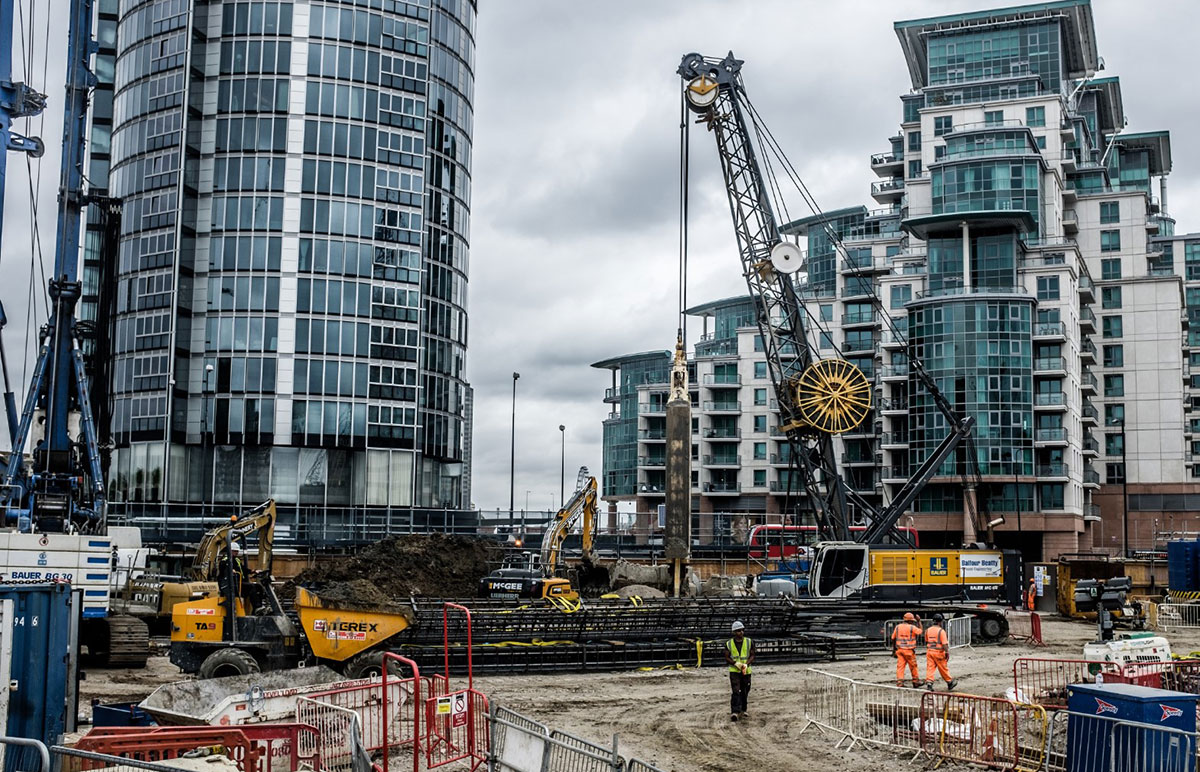Geotheta Fundamentals Explained
Geotheta Fundamentals Explained
Blog Article
The Basic Principles Of Geotheta
Table of ContentsWhat Does Geotheta Do?The 9-Minute Rule for GeothetaSome Known Facts About Geotheta.How Geotheta can Save You Time, Stress, and Money.
They collaborate with civil engineers, architectural designers, engineers, and other specialists to incorporate geotechnical factors to consider right into the general project style and construction process. This requires efficient teamwork, control, and interaction to ensure that the geotechnical elements line up with the task purposes and fulfill regulative needs.Mining & Products Design: Concepts of boring, infiltration prices, and elements affecting the option of exploration approach. Qualities of nitroglycerins, shooting systems and blast patterns. Blasting techniques in surface and below ground workings. Unique blowing up techniques at excavation perimeters. Vibration and sound control. Mechanical and continuous approaches to fragmentation, including longwall shearing and fullface boring.
Modelling of piece and fragment size circulations; comminution as a transfer feature. Comminution technology: squashing, grinding, size category. Integrated analysis of fragmentation and comminution procedures. Provided by: Mining & Materials Design.
The Definitive Guide to Geotheta
Bachelor's level programs in civil, geotechnical, geological, and environmental design generally last four years and consist of basic education courses in English, social science, and the humanities, along with courses in innovative mathematics, architectural geology, and liquid mineralogy. (https://geotheta.bandcamp.com/album/geotheta)
Geotechnical engineering includes the evaluation of the soil and rock conditions at a specific website, and their implications for the growth of that website. As most frameworks depend on the ground for support, it is without shock that a thorough understanding of the ground problems, and the suitability of structure systems, are essential to the long-lasting stability and efficiency of the building or structure.
Being experts in the investigation of geological developments and ground practices, geotechnical engineers execute scientific investigations and testing to understand the influence these geological formations may have on the design and construction of structure, civil and facilities jobs. This know-how is vital for the design and construction of buildings, roadways, tunnels, dams, bridges, and water system and sewage systems.
The geotechnical team at Douglas Partners consistently talk to engineers, layout engineers, programmers, and building contractors to make suggestions on layout and growth propositions to make certain that the built structures are appropriately developed for the ground conditions. As an example, the layout of footing systems requires to think about the weight of the structure, the capability of the ground to sustain that weight together with activity resistances and effective building.
An Unbiased View of Geotheta
This task is substantially streamlined by the usage of our Douglas Map geospatial system which makes this details readily obtainable in a very easy to utilize internet internet browser interface. A geotechnical designer will direct the exploration of boreholes and examination pits to gather soil and other examples, and additionally examine surface functions and ground exposures to develop a geotechnical version of the subsurface conditions.
Depending on the task type and ground problems came across, research laboratory screening might amongst other things analyze stamina, compressibility, sensitivity and/or leaks in the structure of dirt and rock examples. Hereafter information is gathered and collected, the outcomes are used for a geotechnical version of the website, which is typically presented as sections across the site.

A geotechnical examination naturally can only examine the ground conditions at the places drilled or excavated. All-natural variants in soil and rock problems can happen throughout a site and in between examination areas. It is therefore excellent practice that the geotechnical designer be kept throughout construction of the task to give on-site confirmation that the ground conditions come across are consistent with the expectations and advice provided in the geotechnical investigation record.
The Basic Principles Of Geotheta
Geotechnical designers use their in-depth knowledge of soil and rock to evaluate threat and solve problems on diverse infrastructure projectsGeotechnical engineering is a specialist branch of civil design which takes a look at the behaviour of earth products and the application of dirt and rock mechanics. Consulting Engineers. As a geotechnical engineer, you will examine the physical, mechanical and chemical buildings of dirt and rock in order to design structures, retaining structures and earthworks
Geotechnical engineering is carefully connected to and overlaps with, both design geology and ground engineering - https://www.imdb.com/user/ur185987626/?ref_=nv_usr_prof_2. It's possible to specialise in geotechnics or job for a geotechnical firm but be referred to as a design rock hound or a ground engineer. As a geotechnical engineer, you'll require to: develop and preserve relationships with clients and other specialists involved in the site, throughout each projectmaintain safety criteria on site be conscious of cost ramifications when you make recommendationsstudy geological maps and aerial photos from a series of resources and from different time periodsexamine building intends to see just how viable they are based upon your understanding of the siteinvestigate dangers or geological hazards for the sitesearch for ecologically sensitive features, such as land fill start to create factual and interpretive ground modelsplan field investigationsdrill and evaluate samples of bedrock, soil, groundwater and additional materials oversee various other experts on sitesolve technical problems as they occur, such as unforeseen frameworks at drill sitesmonitor conditions throughout and after construction to see to it frameworks are steady in the short and long termadding data accumulated on site to your preliminary researchcreating geotechnical calculations, drawings, and 2 or three-dimensional computer designs translating the datamaking referrals regarding the recommended use the site

Report this page